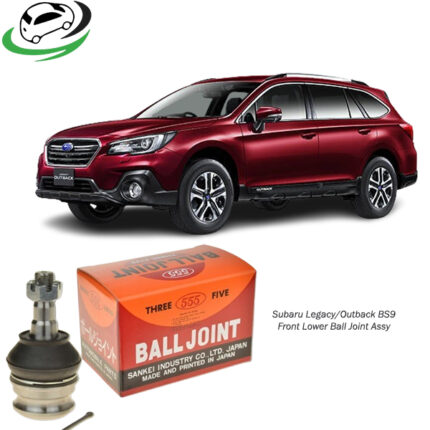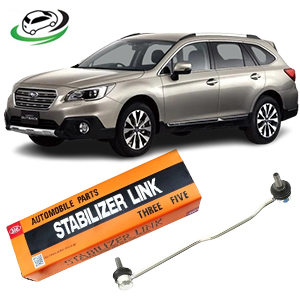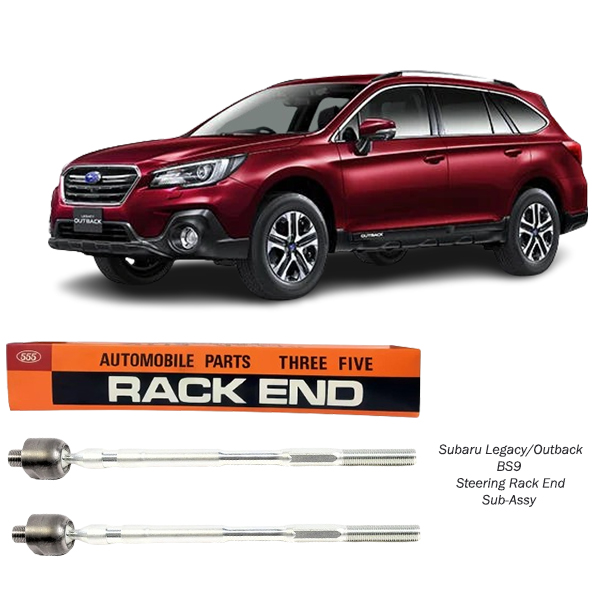-17%
Get Subaru Legacy/Outback BS9 Steering Rack End Sub-Assy 34160XA010 in Kenya
Rack ends, also known as tie rod ends, are essential components of a vehicle’s steering system. They play a crucial role in converting the rotational motion of the steering gear into linear motion, which ultimately controls the direction in which the vehicle travels. Understanding the functions of rack ends and recognizing signs of wear is important for maintaining safe and responsive steering.
Functions of Rack Ends:
- Steering Control: Rack ends are pivotal in the steering mechanism of a vehicle. They connect the steering rack, which is a part of the steering gear assembly, to the steering knuckles or wheel hubs. As the steering wheel is turned by the driver, the rotational motion is transmitted through the steering system to the rack ends. This motion is then translated into lateral movement of the tie rods, which ultimately turns the front wheels, allowing the vehicle to change direction.
- Alignment Adjustment: Rack ends are adjustable components that enable the alignment of the vehicle’s wheels. Proper alignment ensures that the wheels are positioned parallel to each other and perpendicular to the road surface. This is crucial for even tire wear, optimal handling, and fuel efficiency. By adjusting the length of the tie rods connected to the rack ends, mechanics can adjust the toe alignment, which is the angle of the wheels relative to each other.
- Stability and Handling: Rack ends contribute to the stability and handling characteristics of a vehicle. They help maintain proper wheel alignment, which is essential for predictable steering response and stability, especially during cornering and maneuvering. Worn or damaged rack ends can lead to poor handling, increased steering effort, and compromised stability, affecting the vehicle’s overall safety.
- Absorption of Road Vibrations: Rack ends are equipped with ball joints or bushings that allow for smooth articulation of the steering system. They help absorb shocks and vibrations from the road surface, preventing them from being transmitted to the steering wheel. This contributes to a smoother and more comfortable driving experience, reducing driver fatigue and improving vehicle control.
- Supporting Suspension Movement: Rack ends play a role in accommodating the movement of the suspension system. As the vehicle encounters bumps, potholes, and uneven road surfaces, the suspension compresses and rebounds to absorb the impact and maintain tire contact with the road. Rack ends allow for this movement while ensuring that the steering remains responsive and consistent.
Signs of Worn Out Rack Ends:
- Loose or Sloppy Steering: Worn rack ends can result in loose or sloppy steering, where the steering wheel feels unresponsive or has excessive play. This can make it difficult for the driver to maintain control of the vehicle, especially at higher speeds or during maneuvers.
- Uneven Tire Wear: Worn rack ends can cause uneven tire wear, typically characterized by excessive wear on the inner or outer edges of the tires. Improper wheel alignment due to worn rack ends can lead to increased tire scrubbing and premature tire wear, affecting handling and safety.
- Knocking or Clunking Noises: Excessive play or looseness in the rack ends can result in knocking or clunking noises, particularly when driving over bumps or rough roads. These noises indicate that the rack ends are no longer securely connected to the steering system and may require replacement.
- Steering Wander or Drift: Worn rack ends can cause the vehicle to wander or drift unintentionally, especially on highways or straight roads. This occurs when the worn rack ends cannot maintain proper wheel alignment, causing the vehicle to veer off course.
- Difficulty Steering or Turning: If the rack ends are severely worn or damaged, the steering may become stiff or difficult, requiring increased effort from the driver to turn the wheel. This can significantly affect the vehicle’s maneuverability and safety.
- Visible Wear or Damage: Visual inspection of the rack ends may reveal signs of wear, such as torn or damaged rubber boots, rust or corrosion on the metal components, or excessive movement or play when the wheels are lifted off the ground. These visual cues indicate that the rack ends are in need of replacement.Follow us on Facebook



